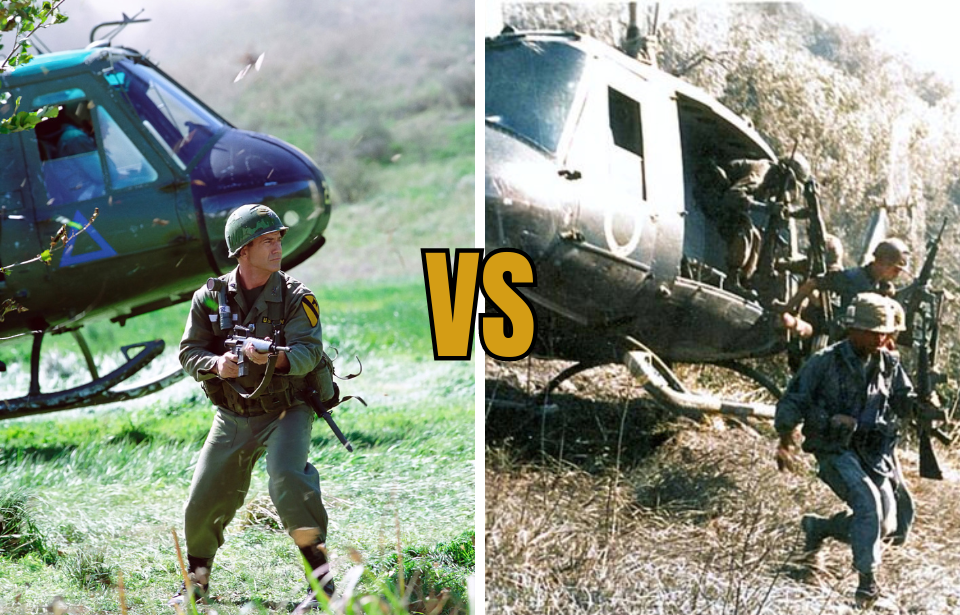Released in 2002, We Were Soldiers is widely praised for its authentic portrayal of the Vietnam War, particularly the ferocious Battle of Ia Drang. Director Randall Wallace drew heavily from We Were Soldiers Once… and Young, the firsthand account of Lt. Gen. Harold G. Moore and journalist Joseph L. Galloway, both of whom experienced the conflict firsthand.
Although the film captures the intensity, fear, and heroism of combat, certain elements—most notably the homecoming sequences—were dramatized to create a more emotionally resonant ending. These scenes, while not entirely accurate, were intended to provide closure and amplify the story’s emotional impact. Despite this narrative adjustment, the movie remains lauded for its realistic depiction of battlefield conditions and its respectful tribute to the soldiers who fought in one of the Vietnam War’s most brutal battles.
What is We Were Soldiers about?
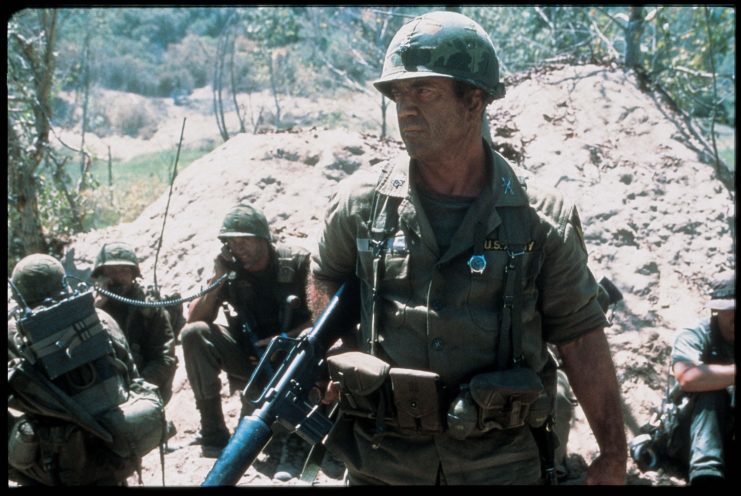
We Were Soldiers is based on the novel, We Were Soldiers Once… and Young: Ia Drang – The Battle That Changed the War in Vietnam, by renowned war correspondent Joe Galloway and Lt. Gen. Hal Moore. Both were present at the Battle of Ia Drang, the first large-scale engagement of the Vietnam War.
The film follows the experiences of both Moore, portrayed by Mel Gibson, and his wife, Julia, played by Madeleine Stowe. The former arrives in Vietnam in November 1965, and, soon after, is tasked with leading his 400 men in an effort to take out the enemy troops who attacked one of the bases in the Ia Drang Valley. Outnumbered when they arrive, the men are forced to fight for their lives while eliminating the 4,000-strong North Vietnamese force.
The secondary plot follows Julia, who volunteers to deliver telegrams informing families of their loved ones’ deaths in Vietnam.
The ending of We Were Soldiers
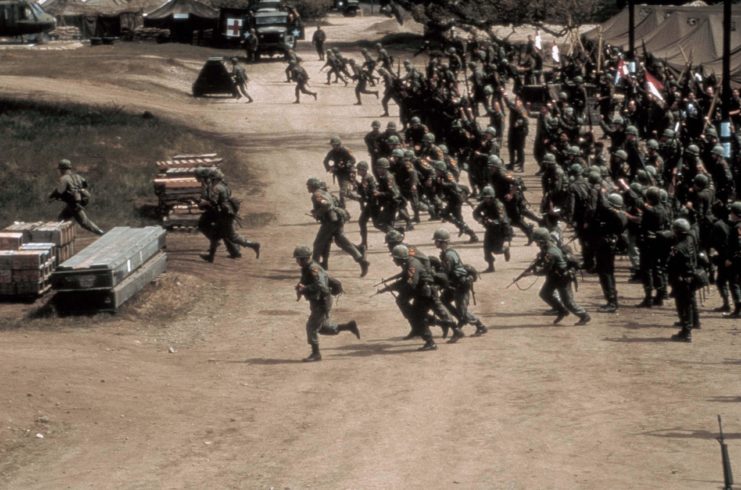
In the film’s gripping climax, Lt. Col. Hal Moore makes the critical decision to call a “Broken Arrow”—a rare and desperate directive that summons every available air support to strike the battlefield, no matter the risks. This tense moment highlights just how perilous the situation has become, with Moore’s troops surrounded and nearly overwhelmed. The ensuing bombardment halts the North Vietnamese and Viet Cong assault, though the intense chaos results in some American casualties from friendly fire.
Gradually, Moore’s men, battered and exhausted, manage to regroup and hold their positions as the enemy’s final push falters. The North Vietnamese are forced to withdraw, surrendering the contested ground.
As the smoke clears, the surviving soldiers prepare for evacuation. True to his leadership principles, Moore refuses to depart until every single man—alive or deceased—is accounted for, a steadfast sense of duty that adds profound emotional resonance to the finale.
While the Americans leave, the North Vietnamese soon reclaim the area, and Moore continues to serve in Vietnam for another year, facing further combat before finally returning home. His reunion with his wife, Julia, provides a quiet, reflective moment of relief after the relentless pressures of war.
Battle of Ia Drang
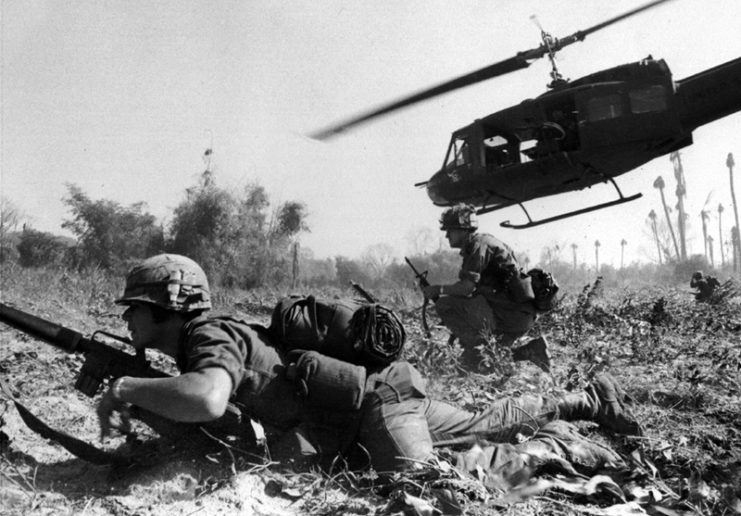
The actual Battle of Ia Drang occurred from November 14-19, 1965, and the intense fighting primarily centered around two key helicopter landing zones: LZ X-Ray and LZ Albany. The 1st Battalion, 7th Cavalry Regiment, under the command of Lt. Col. Hal Moore, was heavily engaged in combat at LZ X-Ray for three days starting on November 14, 1965.
While We Were Soldiers captures much of the battle’s intensity and bravery, the film deviates from the historical facts in its portrayal of the battle’s conclusion. In the movie, the battle ends with Moore’s forces successfully evacuating and completing a dramatic final charge. In reality, however, the battle didn’t officially conclude until LZ Albany was reclaimed by American forces, which marked the true end of the engagement.
Additionally, the majority of the 2nd Battalion, 7th Cavalry Regiment, led by Lt. Col. Robert McDade, didn’t enter the fight until after Moore’s forces had been relieved at LZ X-Ray. After Moore’s men were airlifted out, McDade’s battalion was reinforced by the 2nd Battalion, 5th Cavalry Regiment, and took over the fight to secure LZ Albany.
LZ Albany
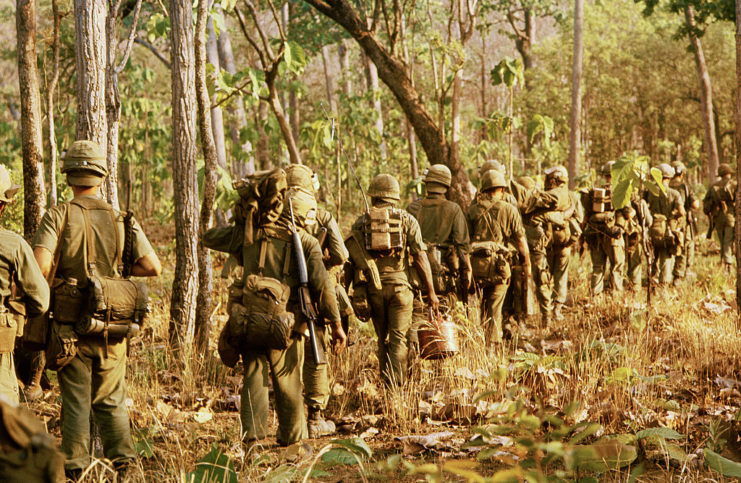
The next day, both battalions were warned that enemy bombers were headed toward LZ X-Ray, forcing them to move. The 2nd Battalion, 5th Cavalry Regiment marched toward LZ Columbus, while the 2nd Battalion, 7th Cavalry Regiment made their way to LZ Albany, capturing two North Vietnamese soldiers along the way. These prisoners were questioned by McDade, who, along with most of the battalion’s officers and radio operators, was called to a meeting to go over the gathered intelligence.
At the same time, the rest of the 2nd Battalion was left waiting with no communication. Exhausted from the battle at X-Ray, they were unprepared when hundreds of enemy troops slipped in unnoticed and launched an attack. The battalion heading to Columbus soon received word of the assault, leading Bravo Company to turn back to Albany as reinforcements. Their arrival helped push back the enemy, making it possible to evacuate the wounded.
Conclusion of the Battle of Ia Drang
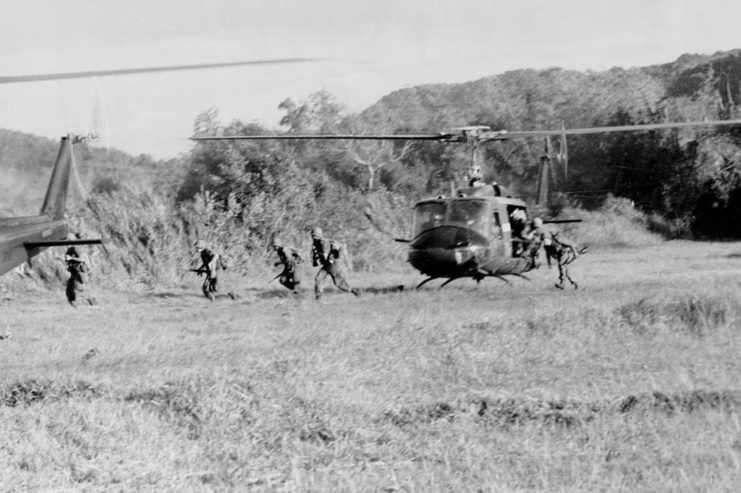
There were no further attacks overnight. On November 18, 1965, the US forces were able to gather their dead. Although the fighting had ended, the Battle of Ia Drang didn’t officially conclude until the next day, as it took two days to collect the bodies.
James Lawrence, one of the men who fought at LZ Albany, later recounted his experiences. He wanted to ensure the memories of those who died live on, in particular that of his best friend, Lt. Don Cornett.
Recalling the aftermath of the fight, he said, “Back then Stars and Stripes would carry the casualty reports and I had a red pen and started checking off the names of guys I knew who were listed as KIA. I marked off 65 names and that’s when it really hit me what had happened and it just overwhelmed me. I couldn’t grasp it.”
More from us: Val Kilmer Accidentally Landed Matthew Modine the Starring Role in ‘Full Metal Jacket’
Although it was left out of We Were Soldiers, Albany was no less bloody than X-Ray. Of the 500 men present as part of the 2nd Battalion, 7th Cavalry Regiment, 155 lost their lives, and just 84 were immediately able to return to active duty.
